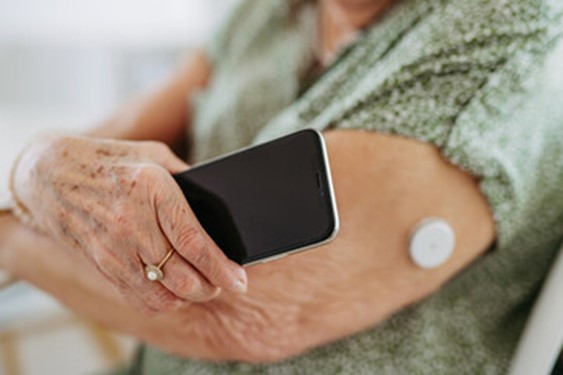Current Standard of Care in NHs
Managing diabetes in nursing home (NH) residents is especially challenging in nursing homes (NHs). The complexity of residents’ medical conditions coupled with facility-related challenges like high staff turnover, create significant obstacles to proper diabetic care for their residents.1,2 Care regimens initiated in acute care are difficult to sustain in the NH setting because they require several insulin injections per day and intensive blood glucose monitoring. These complex regimens increase treatment burden for staff and the opportunity for error is high.
In a recent study presented at the 2023 American Diabetes Association meeting, our team found that nurses administering complex insulin regimens in NHs perceived a high burden of effort including mental, physical, and temporal demand. Additionally, respondents estimated that basal-bolus and sliding-scale insulin (SSI) required more than 24 fingersticks per week to adequately monitor therapy.3
Fingersticks for blood glucose monitoring may not provide accurate information for treatment decisions. For example, in a study of glucose monitoring practices in 117 long-term care residents, SSI therapy was associated with a mean ± standard deviation of 19.9 ± 7.9 fingersticks per week, of which 12.5 ± 7.6 were not followed by insulin administration.4 Fingersticks are a painful process for NH residents to endure, as they tend to be more frail than other adults. Because of the pain involved, fingersticks can negatively impact quality of life for NH residents and certainly warrant consideration when developing treatment plans for older adults.
Advantages of Continuous Glucose Monitoring
Over the past few years, numerous studies have explored the impact of continuous glucose monitoring (CGM) in different diabetes populations. The study outcomes have influenced notable changes in payer coverage, prescribing practices, and the wider adoption of CGM.5
The DIAMOND (Multiple Daily Injections and Continuous Glucose Monitoring in Diabetes) study randomized patients at endocrinology clinics with types 1 and 2 DM and on basal-bolus insulin to CGM or self-monitored blood glucose (SMBG) 4 times daily for 24 weeks.6 They found that adults over 60 years of age had improved A1C values, increased time in range, and a high level of patient satisfaction. Additionally, the HYPOAGE study observed 28 days of CGM use in community-dwelling subjects over 75 years old and found that 65% of subjects experienced severe nocturnal hypoglycemia (< 54 mg/dL), a rarely diagnosed finding using fingerstick BG monitoring.7
In addition to improving care, CGM has the opportunity to improve care efficiency and decrease nursing burden by eliminating most fingersticks and the clinical tasks associated with them. The ability to detect hypoglycemia could be improved (even in patients at the end of life) and glucose monitoring in patients on room isolation could be optimized.
Burden-reducing technology, like CGM, should be a top priority in nursing homes, as these facilities continue to face the most significant hiring challenges of any healthcare sector following the COVID pandemic. Unfortunately, CGM use in NHs has lagged compared to other settings and patient populations. Low provider adoption and system barriers prevent more frequent use of CGM. Despite evidence to support CGM, fingersticks and complex insulin regimens continue to be standard of care in nursing homes. There is a large proportion of nursing home residents that have diabetes, who might benefit from CGM. Further research is needed to determine the size of this vulnerable population and the real-time benefits CGM can have on glycemic control.
Other Helpful Resources: American Diabetes Association. (n.d.). Continuous Glucose Monitors. https://diabetes.org/advocacy/cgm-continuous-glucose-monitors

